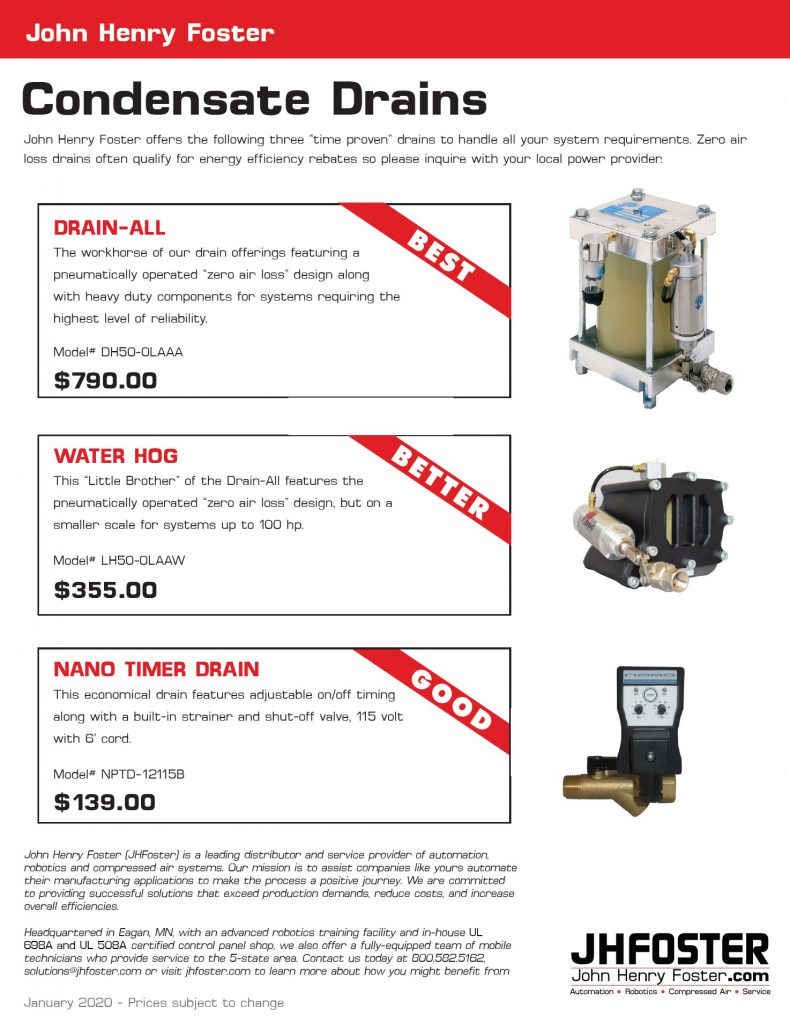How to Remove Water from Your Compressed Air System
Condensate Management and Filtration
You need to supply clean, dry compressed air to your tools, equipment, and system processes. However, how exactly do you ensure that this air is clean and pure? By using filtration and condensate management.
If you haven’t selected compressed air accessories to manage condensation, we will go over how to do so below!
Drains
Most compressed air systems are actually designed to remove condensation in certain areas. In fact, condensate management is done through the installation of drains in certain areas: after cooler separators, receiver tanks, air dryers, in-line filters and at drain points of the piping system.
These drains are tasked with removing condensate from the pressurized air system using safe protocols. In addition, these drains also will not put too much of a dent in your wallet! They are relatively inexpensive.
Zero Air Loss Drains
Condensate drains are arguably the most valuable piece in a purification system. When you install drains into your compressor system, you should also install zero air-loss automatic drains with large drain ports. These drains do not consume compressed air and are very reliable.
Benefits of Condensate Drains:
- Saves energy (no air consumption)
- Very resistant to clogging
- Removes risk of condensate carry-over
- Automatically adjusts to condensate levels
- Long service intervals with safe, easy maintenance
Listed below are the types of drains we have for purchase at JHFOSTER.

Filtration
Creating clean air can be as simple as installing a filtration system. You will, however, need to consider different filter requirements based on the industry you are in. If you don’t check on these requirements, you may experience efficiency losses, maintenance issues, and premature failure of pneumatic components.
Types of Filtration
Selecting the right type of filtration system for clean, dry air is an important task. Food and beverage, semiconductor and automotive plants, for example, all have different filtration needs based on their specific pneumatic systems and operating environments.
The most common types of filters are:
- Water Separators – the centrifugal forces generated by an internal spinning mechanism, removes water and moisture.
- Particulate Filters – the pleated design maximizes the surface area to trap dirt particles.
- Coalescing filters – the design of coalescing filters differ from manufacturers and comes in different grades.
- Absorbing Filters – used downstream to remove oil and hydrocarbon vapor.
Contact Us For Support
Matching the correct condensate management and filtration technology with specific pneumatic systems can be daunting. Often, it’s helpful to seek out experts who can help strike the right balance between air quality and pneumatic system performance.
When you are ready, please feel free to contact us at 651.452.8452 or request more information and to receive a no-obligation price quote for your application.
